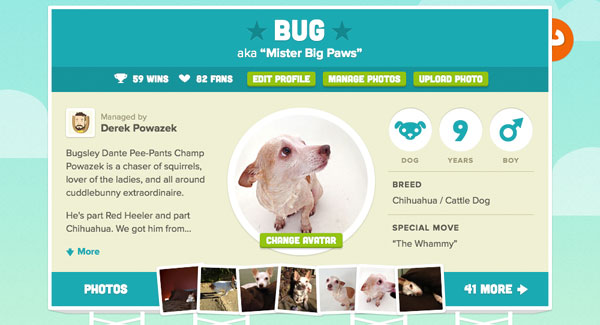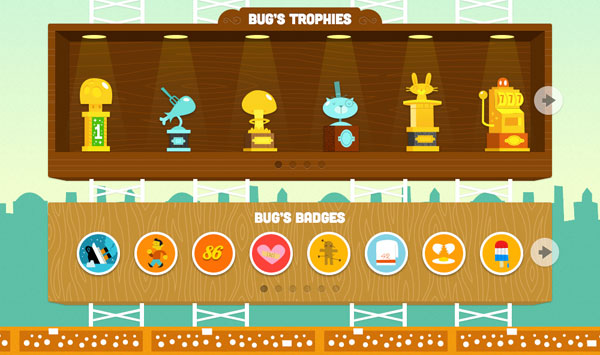On
26 June 2013 tagged Fertile Medium
Hint: Do it like Kickstarter, not Paula Deen.
If you’re human, eventually you’ll have to apologize for something. How you communicate that apology will say more about you, your company, and your community than anything else.
Two high profile apologies hit the web today, one from Kickstarter and the other from Paula Deen. Without getting into the specifics of what they were each apologizing for, they make for two fascinating case studies in how to apologize online.
(Yes, Kickstarter is a company and Paula Deen is a person, but in this context, they’re both corporations with angry communities, and their businesses hang in the balance.)
With today’s examples in mind, here’s the Fertile Medium recipe for apologizing online.
Step 1: Restate the problem.
I know, you’re embarrassed. You probably don’t want to remind everyone of the thing that pissed them off. But apologies online take on a life of their own, bringing in people who are unfamiliar with the details. Restating the problem not only gets everyone on the same page, it also shows that you understand what you did wrong.
Kickstarter begins their post with a brief summation of what happened, complete with links so that the interested reader can follow up for more information. Paula Deen skips this step, only referring to “inappropriate language,” leaving those unfamiliar with the situation to imagine the worst.
Step 2: Own it.
Before you do anything else, prove that you know what you did. This shows that you’re not just apologizing because someone told you that you have to – you’re apologizing because you have genuine remorse.
Kickstarter says, in a paragraph all by itself, “We were wrong.” It’s a sharp, frank admission. Paula Deen says she “made plenty of mistakes along the way” but doesn’t say if she thinks this was one of them. She says “I apologize,” but never simply says “I was wrong.”
Step 3: Say you’re sorry.
Now that you’ve demonstrated your understanding of the situation, your apology will have more meaning. Never, ever follow the word “sorry” with the word “if” – as in: “I’m sorry if you’re offended.” That only shows that you don’t really mean it.(Nobody did this here, I just hate that.)
Both Kickstarter and Paula Deen did this part, but it was basically all Paula Deen did, which is why her apology has so little weight.
Step 4: Explain what went wrong.
This is a tricky maneuver. Do it right and your explanation will add valuable details that help the reader better understand your perspective. Do it wrong and it’ll sound like defensiveness.
Kickstarter did this part very well. They explain why they acted when they did, and shared more detail about their internal process. I especially like that they admitted that they’re “biased towards creators.” As a platform for creation, of course they are.
Paula Deen didn’t do this at all. She could have said, “You know, I grew up in Georgia in the ’50s and let me tell you, I heard some horrifying stuff. I’m sad to say, some of that language and some of those jokes got stuck in my head. I’m ashamed that I repeated them.”
Explaining what went wrong doesn’t mean excusing it. But, if handled correctly, it can serve to humanize the apologizer.
Step 5: Make a vow.
Explaining what happened shows you understand the past, making a vow shows you’ve thought about the future. Make a promise to not repeat this mistake. Do it at a permanent URL and be clear about what you’re promising. You’ll be judged by how you keep your word.
Kickstarter also did this with aplomb. They took direct action, explained why, provided proof, and changed their guidelines to ensure it doesn’t happen again. Paula Deen … didn’t. She apologized in multiple videos, some of which kept disappearing throughout the day, adding an unnecessary layer of aggravation to the whole ordeal.
Step 6: Make amends.
Prove you get it.
Apologizing isn’t just about words, it’s about deeds. Do something to prove that you understand the magnitude of your mistake.
In Kickstarter’s case, they made a large donation to a nonprofit that’s directly related to the issue at hand. They put more money into the nonprofit than was involved in the mistake. This shows they understand the value of their community goodwill.
Paula Deen, again, didn’t do anything of the sort.
Step 7: Apologize again.
Apologies don’t have a 1:1 ratio with mistakes. You may have to apologize more than once. Don’t like apologizing? Pick a career that doesn’t involve other people. Apologize and keep apologizing as long as you have to.
Finally, it’s interesting to note that Kickstarter apologized in text and Paula Deen did it in a video. While this could be because her primary relationship with her audience is in video, it also may have been an attempt to humanize her.
Apologies via video is a dangerous strategy. If the video is too polished (as her first one was), it can seem inauthentic. If the video is too amateur (as the second and third ones were), it looks like you’re not taking it seriously. Perhaps, if she’d written it instead, she could have given it a bit more thought. Changing her usual medium from video to text would have shown a degree of consideration that the videos didn’t.
Mistakes are inevitable. How you respond is what defines you. Use the apology opportunity to reinforce your core values.
If you do it right, you’ll create a stronger bond with your community, one that will earn you the benefit of the doubt the next time you screw up.
Do it wrong and you may just lose your job.
Fertile Medium is an advice column for people who live online. Each edition tackles a topic or question from you about building social spaces online. Want to ask a question? Tweet to @fertilemedium or call (415) 286-5446 and leave a message.
On
8 March 2013 tagged Cute-Fight
 Over at Cute-Fight, we’ve completely revamped the fighter profile pages. Check out Bug’s page.
Over at Cute-Fight, we’ve completely revamped the fighter profile pages. Check out Bug’s page.
We’ve been working on this update for months. The goal is to make our pets look awesome, as well as make these pages a fun place to visit for all. Here are some of the notable features.

When your fighter is in a fight, one of our specially trained pilots flies by with a banner tell the world.

The main area is now designed to match the cards that appear in fights, showing your fighter’s bio, photo, and other information. If you’re the manager, you get some special stats and features. And note that little orange bump on the right side. I wonder what it does?

Fans appear! You can now see all the members who are fans of your fighter, right on the profile.

And finally, the trophy case and badges box, where your fighter proudly shows off all their winnings.
We’re really proud of this update and hope you dig it, too. And if you have a pet you haven’t yet added to Cute-Fight, what are you waiting for? Bring ’em on!
On
8 February 2013 tagged Blocking, Geek, Twitter
I’ve been using Twitter since 2006, and thanks to their new archive feature, I was recently able to download all of my tweets. I’ve blocked a lot of people over the years – I love my Magic Button – and occasionally I’ll make a mental note of why I did it. Here’s the list so far.
- Replying with “That’s what she said.”
- Shotgun replies (like 10 in a row).
- Being the pope.
- Being Charlie Sheen.
- Being my mom.
- Pedantics. (IE, anyone who knows that should be “pedantism.”)
- Asking me something you could have found in Google in two seconds.
- Repeatedly replying to tweets with your URL.
- Taking me too seriously.
- Demanding that I take you too seriously.
- Anything about Jesus.
- Anything about Gangnam style.
- “PLZ RETWEET!!!”
- Replying with a URL and nothing else.
- Mindless flag-waving “more patriotic than thou” bullshit.
- Hitler jokes.
- Making me explain the joke.
- Supporting Prop 8 (AKA bigotry).
- Bad taste in TV.
- Bad taste in music.
- Bad taste in men.
- Apostrophe abuse.
- Telling me not to be grumpy when I am obviously grumpy.
- Becoming the mayor of anything that’s not a city.
- Unironic use of “LOL.”
- Starfucking.
- Excessive punning.
- “Get a hybrid.”
- I was having a bad day.
- You were having a bad day.
So if I ever blocked you on Twitter, it’s probably one of those things. Or maybe something entirely new. Remember, it’s not you, it’s me. I just think we should follow other people right now. I only want you to be happy.
+
SEE ALSO: Press the Magic Button! My “one strike” rule for Twitter/Flickr and why you shouldn’t be offended when someone blocks you.
AND: Twitter for Adults.
On
19 December 2012 tagged Business, Cute-Fight, Internet, Startups
Yesterday I posted a discombobulation of the “If you’re not paying for the product, you are the product” truism. Judging from the feedback, I hit a nerve.
Today I realized that I broke one of my own rules. Don’t just complain, propose a solution. So here goes.
Instead of telling people “you are the product,” which creates a feeling of inevitability and powerlessness, let’s say this: “If you don’t know how a startup will make money, neither do they.”
This, I hope, will remind people that the business plans of the startups they use are, indeed, their business. They should find out how the company is making money now and what their plans are in the future. They can then make an educated decision whether to participate or not. They can also judge the company by how well they keep their word.
It’s also a clear message to startups: your business plan cannot be secret anymore. People are too smart for that, too tired of getting burned, too wary of losing their contributions when a startup dies, and too annoyed by sudden changes to the terms. Communicate your business plan from the start and you’ll avoid a thousand problems down the road.
It’s a sign of the times that when I told people about Cute-Fight, their first question was usually, “How will it make money?” That never happened back in the day.
So we’ve had an answer in our FAQ since day one. In a nutshell, it’s sponsored venues. We did the hard work to have examples like this and this shortly after launch. That way, when people asked, we could point to a real example on the website.
Now, of course, this is not the only way we plan to make money. We’ve got other ideas that we should talk about sooner than later. But the point is to have an answer and make it public.
Many startups are afraid of this kind of disclosure. There was a time when you wanted to keep these plans a secret. But times are changing. People expect to know. And if we want them to trust us, we’ve got to tell them. We can change our minds, make improvements, and respond to changing circumstances. We just then tell them again. And if we’re very lucky, they’ll give us suggestions about what they’d like to pay for. It becomes a conversation between members of a community that all want the business to succeed.
I still don’t think we should yell at developers, but we should look at sites that ask for our participation and try to see how they make money. If we can’t tell, we should ask. And if there’s still no good answer, then we should assume that’s because there isn’t one, and decide to participate with caution. Some websites may be compelling enough to warrant participation anyway (Twitter), but then at least we go in with open eyes.
So, to sum-up:
People: You are not the product. You’re a smart person making an educated decision about which companies you trust with your time, attention, and contributions. If you don’t know, or don’t trust, the business model of a company, don’t use their product.
Companies: Communicate with your users. Tell them how you’ll make money, early and often. Your honesty will help you earn their trust, and their trust is your most valuable asset.





